Description
microphone module
Audio or sound detection sensor modules, commonly known as microphone sensor modules, are popular for projects that require sound sensing capabilities, particularly with Arduino. These modules detect sound intensity in the environment and convert it into an electrical signal, making them a versatile choice for sound-activated projects like voice-activated devices, noise monitoring, and smart home systems.
How Audio Detection Sensor Modules Work
Audio detection sensors are typically equipped with a condenser microphone that picks up sound waves from the environment. When sound waves reach the microphone, they generate small electrical pulses proportional to the sound intensity. These pulses are then processed by the module’s onboard circuitry, which includes an amplifier and a comparator.
1. Microphone: The condenser microphone captures sound vibrations and converts them into an AC voltage signal.
2. Amplifier: This weak AC signal is then amplified to make it readable by other circuits.
3. Comparator: The comparator ic LM358 checks if the sound level exceeds a certain threshold. When it does, the module outputs a digital signal, making it easier to integrate with microcontrollers like Arduino.
There are two main types of outputs from sound detection sensors:
Analog Output: The analog output represents the exact sound intensity level in real-time. This output is typically connected to an analog input pin on the Arduino.
Digital Output: The digital output is used for binary sound detection. When the sound crosses a set threshold, this output sends a HIGH signal. This can be used to trigger specific actions based on sound events without measuring intensity.
Features of Microstudio and Arduino-Compatible Microphone Sensor Modules
Arduino-compatible microphone modules come with adjustable sensitivity, often through a potentiometer, which allows users to set the detection threshold. They are powered by a standard 5V DC supply, suitable for direct integration with Arduino boards and other microcontrollers.
1. Voltage: Most modules work between 3.3V and 5V, compatible with a wide range of microcontrollers.
2. Compact Size: Due to their small form factor, they are suitable for projects where space is limited.
3. Adjustable Sensitivity: This helps set the detection threshold, making the module flexible for different environments.
4. Digital and Analog Pins: Having both types of output expands the range of possible applications.
Applications and Use Cases
Audio detection sensor modules can be used in various applications across fields such as security, automation, and interactive projects. Here are some common use cases:
1. Sound-Activated Lights: Using the module’s digital output, lights can be programmed to turn on when sound is detected.
2. Noise Monitoring: Analog output allows Arduino to detect the intensity of sound, which is useful for noise pollution measurement or monitoring noise levels in public spaces.
3. Voice-Activated Systems: Although these modules do not process specific voices or speech, they can act as triggers for voice-activated systems by detecting claps or other predefined sounds.
4. Robotics: Robots can be programmed to react to sounds, making them more interactive and responsive to environmental stimuli.
5. Smart Home Automation: For a sound-activated alarm or appliance control, this module can act as a trigger, turning devices on or off with a sound signal.
How to Connect an Audio Detection Sensor with Arduino Connecting a sound detection module to an Arduino is straightforward:
1. Connect VCC: Connect the module’s VCC pin to the 5V pin on the Arduino.
2. Connect GND: Connect the module’s GND pin to the Arduino’s GND.
3. Digital/Analog Pin: Connect the digital or analog output to any suitable Arduino pin. Digital output can be connected to a digital pin for binary detection, while analog output can go to an analog pin if you want to measure sound intensity.
Conclusion
Arduino-compatible microphone modules offer a simple yet effective way to incorporate sound detection into various projects. Their adjustable sensitivity, ease of connection, and compatibility with Arduino make them ideal for hobbyists and professionals alike. Whether you’re working on a smart home project or creating an interactive robot, these sensors provide a cost-effective solution for sound-based automation and control.

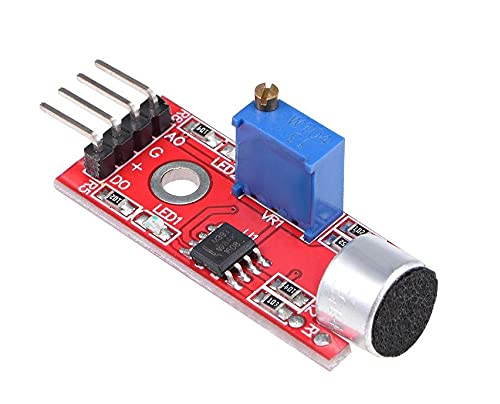
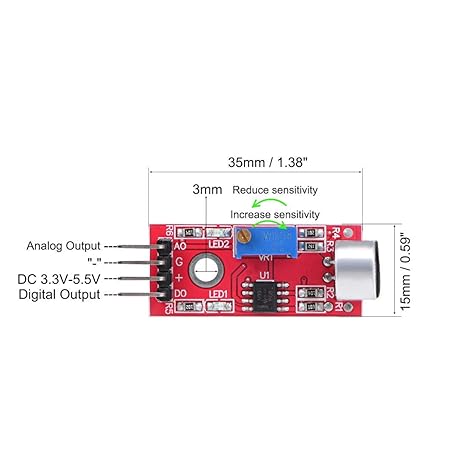






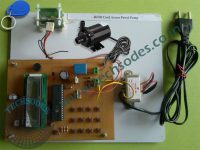

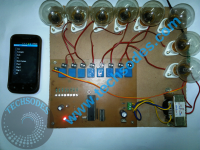
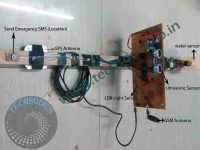

Reviews
There are no reviews yet.